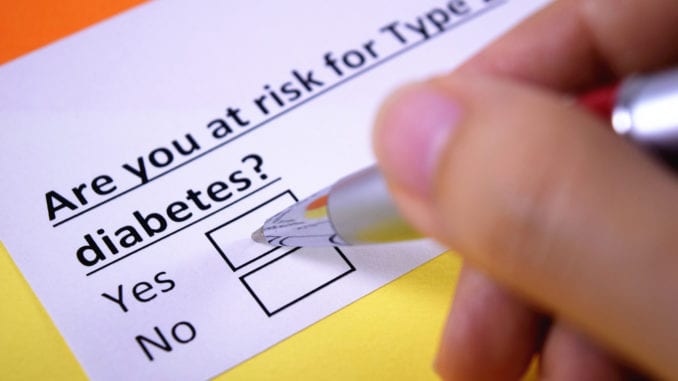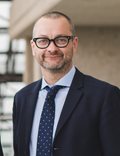
 When physiologist and epidemiologist Jonathan McGavock finished his research training and moved home to Manitoba, his work in a pediatric endocrine clinic brought him face to face with an emerging epidemic of type 2 diabetes in children.
When physiologist and epidemiologist Jonathan McGavock finished his research training and moved home to Manitoba, his work in a pediatric endocrine clinic brought him face to face with an emerging epidemic of type 2 diabetes in children.
“Every single child coming in for treatment of type 2 diabetes was Indigenous and living in a Northern community,” says Dr. McGavock. “I had no idea what to do, but I knew that if we could make a research impact, it would be working with these communities, with youth, to develop strategies that could lead to meaningful change.”
To ensure that the programs they developed worked for Indigenous youth, Dr. McGavock and his team worked with Indigenous community partners to use wholistic models of wellness, grounded in the teachings of Indigenous scholars, rather than western biomedical approaches to disease management.
Indigenous elders and knowledge keepers look at health and well-being much differently than western doctors treat people living with a chronic disease, he explains. “The western model is sort of a deficit approach: ‘How do we fix this problem?’ The Indigenous model is more a strengths-based approach: ‘What seems to be working in other places? What can we learn from that?’”
“In the western approach, diabetes can be seen as a disease of diet and exercise: exercise more, change your diet, manage your blood sugars,” he says. “Among Indigenous people, the reasons for high rates of diabetes stem back to the trauma of colonization and residential schools, and the structural barriers and disadvantages that contribute to stress.”
Rather than focusing on diet and exercise, the team adopted a model called the Circle of Courage, developed by an Indigenous scholar, Dr. Martin Brokenleg. “It focuses on four elements of resilience, which we use as the basis of any programming,” says Dr. McGavock. Those elements are:
- creating a sense of belonging;
- supporting a sense of mastery over your life and your environment;
- giving opportunities for independence and decision-making; and
- providing opportunities for generosity or giving back to your community.
The first program was developed and provided in the remote Island Lake community of northeast Manitoba in partnership with a local diabetes educator, Larry Wood. “Over two years, we piloted our after-school program in grade four classrooms. Kids who participated had improvements in their risk factors. They improved their sense of self-efficacy and their waist circumference; their body weight tended to go down. There were improvements in quality of life as well, which is very important from the standpoint of parents, teachers and kids.”
Ten years later, the program is now operating in about 50 communities across Canada, working with five universities, many scientists and community partners. Indigenous youth and young adults are hired to run programs in their communities.
“We’re now starting to describe the elements of scaling: if a community wants to do this on their own, how would they do it? What are the essential conditions they need to make their program successful? And what could they learn from communities that are already running it?” Dr. McGavock says.
The greatest proof of concept is probably that the youth who participate love the program and stick with it for years, he says. “They start in grade four, and by the time they’re in high school, they want to go back as mentors. They come back after university or college as young adult leaders in their community and support adolescents in running the programs. That lasting legacy, that sustainability, is probably our biggest success, demonstrating the value to the community.”
Once the scaling research is complete, Dr. McGavock looks forward to watching community partners, especially youth, take over and continue these programs. “I’ve been privileged to be able to help, as a non-Indigenous person, but I really look forward to having Indigenous young people take my place on behalf of their own communities and showcase their incredible skills, passion and knowledge. They’ll be the ones leading the charge in the future.”
Diabetes Canada has funded various components of Dr. McGavock’s training and research. Dr. Seema Nagpal, vice president of science and policy, says, “Diabetes is not a homogeneous condition. It occurs differently, for different reasons, in different people.” Dr. McGavock’s approach is unique in that it is extremely respectful of the Truth and Reconciliation Commission’s recommendations, to have Indigenous-led, Indigenous-implemented interventions.”
Diabetes Canada’s mission is to prevent diabetes where possible, to help people manage their diabetes, and to search for a cure, and part of that is to work with Indigenous communities in a respectful way, she says. “Our research agenda is broad: researchers across the continuum of their career are able to apply for funding, from prevention all the way to the cure. Given the impact of the epidemic in Canada, it’s essential that we’re able to address different aspects of diabetes happening in populations.”
She adds, “In 2021, we will mark the 100th anniversary of the discovery of insulin. Although there have been many advancements since then, we still have much work to do for the millions of Canadians impacted by diabetes.
By Lori Bamber
Dr. McGavok’s research is funded by Diabetes Canada. Learn more at diabetes.ca.

